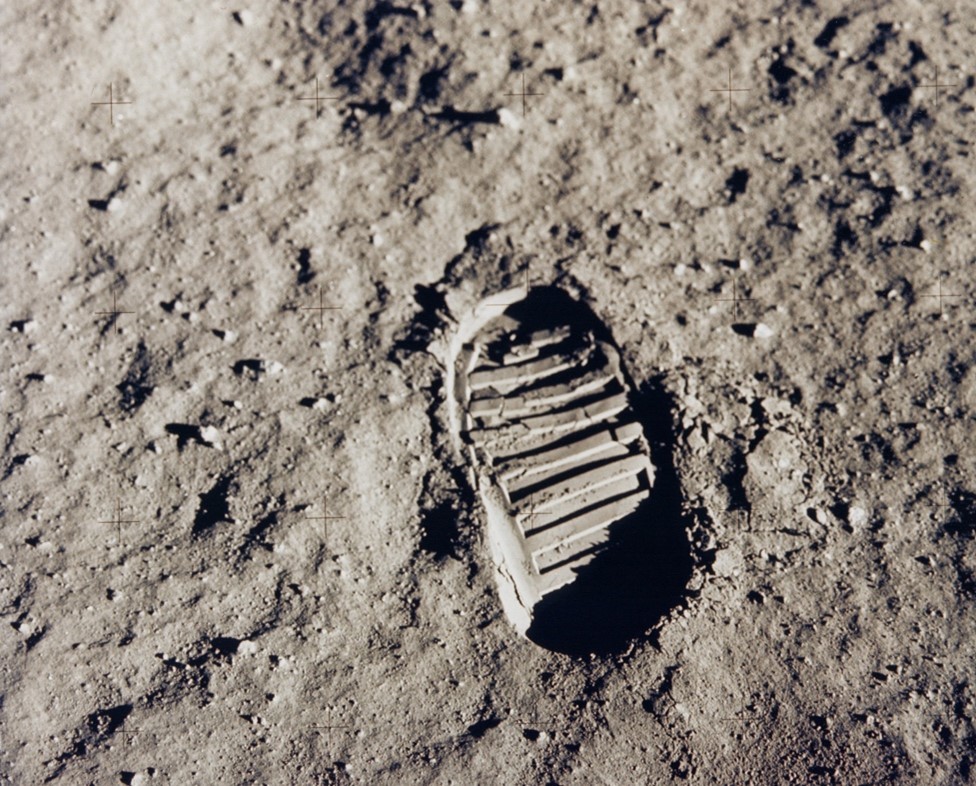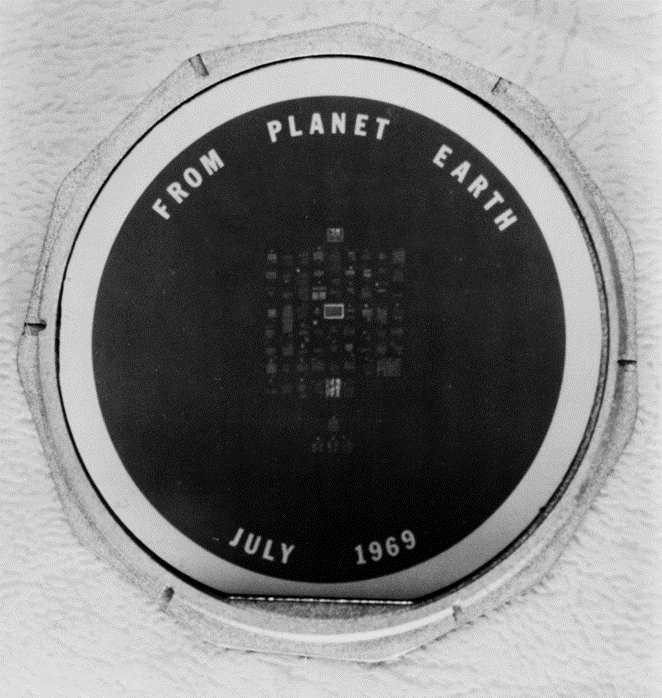From NASA:
One Giant Leap for Mankind
Millions of people around the globe will come together for the Paris 2024 Olympic Games later this month to witness a grand event—the culmination of years of training and preparation.
Fifty-five years ago this July, the world was watching as a different history-changing event was unfolding: the Apollo 11 mission was landing humans on the surface of another world for the first time. An estimated 650 million people watched on TV as Neil Armstrong reached the bottom of the ladder of the lunar module on July 20, 1969, and spoke the words, "That's one small step for [a] man, one giant leap for mankind."
While the quest to land astronauts on the Moon was born from the space race with the Soviet Union during the Cold War, this moment was an achievement for the whole of humanity. To mark the world-embracing nature of the Moon landing, several tokens of world peace were left on the Moon during the astronauts' moonwalk.
"We came in peace for all mankind"
These words, as well as drawings of Earth's western and eastern hemispheres, are etched on a metal plaque affixed to a leg of the Apollo 11 lunar lander. Because the base of the lander remained on the Moon after the astronauts returned, it is still there today as a permanent memorial of the historic landing.
Microscopic messages from kings, queens, and presidents
Another artifact left on the Moon by the Apollo 11 astronauts is a small silicon disc etched with goodwill messages from leaders of 74 countries around the world. Each message was reduced to be smaller than the head of a pin and micro-etched on a disc roughly 1.5 inches (3.8 cm) in diameter. Thailand's message, translated into English, reads: "The Thai people rejoice in and support this historic achievement of Earth men, as a step towards Universal peace."
Curious to read what else was inscribed on the disk? Read the messages.
An ancient symbol
The olive branch, a symbol of peace and conciliation in ancient Greek mythology, also found its way to the Moon in July 1969. This small olive branch made of gold was left on the lunar surface during Neil Armstrong and Buzz Aldrin's 2.5-hour moonwalk. The olive branch also featured on the Apollo 11 mission patches sewed on the crew's spacesuits. Designed in part by command module pilot Michael Collins, the insignia shows a bald eagle landing on the Moon holding an olive branch in its talons.
We go together
As NASA's Artemis program prepares to again land astronauts on the Moon, including the first woman and the first person of color, this time we're collaborating with commercial and international partners. Together we will make new scientific discoveries, establish the first long-term presence on the Moon, and inspire a new generation of explorers.
Is aerospace history your cup of tea? Be sure to check out more from NASA's past at www.nasa.gov/history.
Make sure to follow us on Tumblr for your regular dose of space!





Wow, thanks for this!